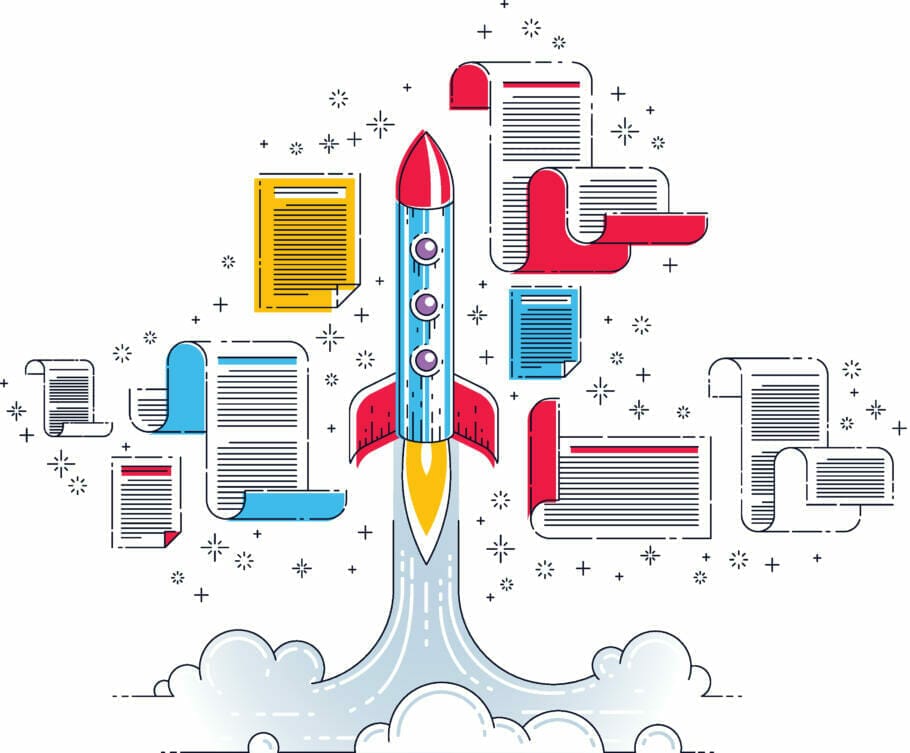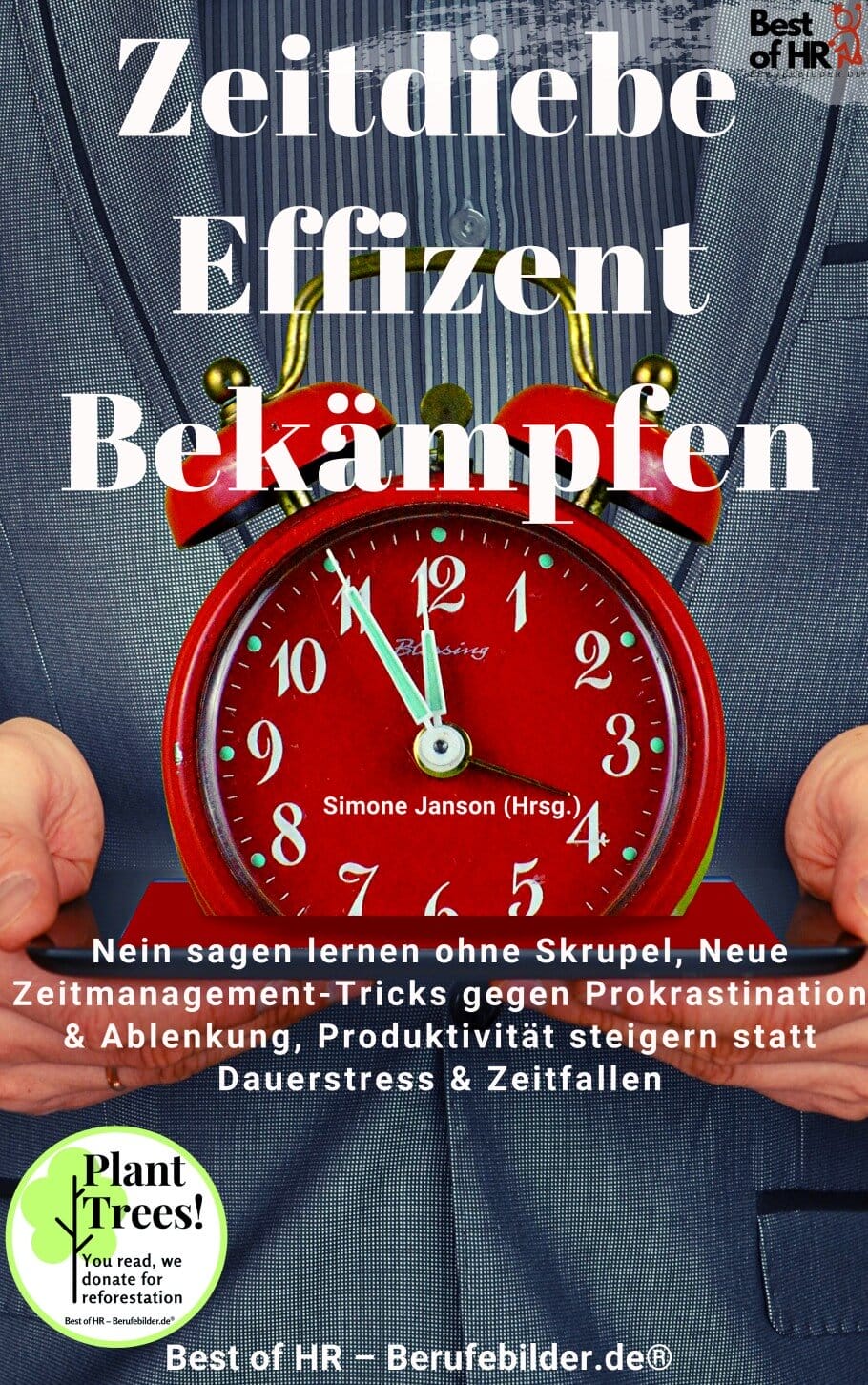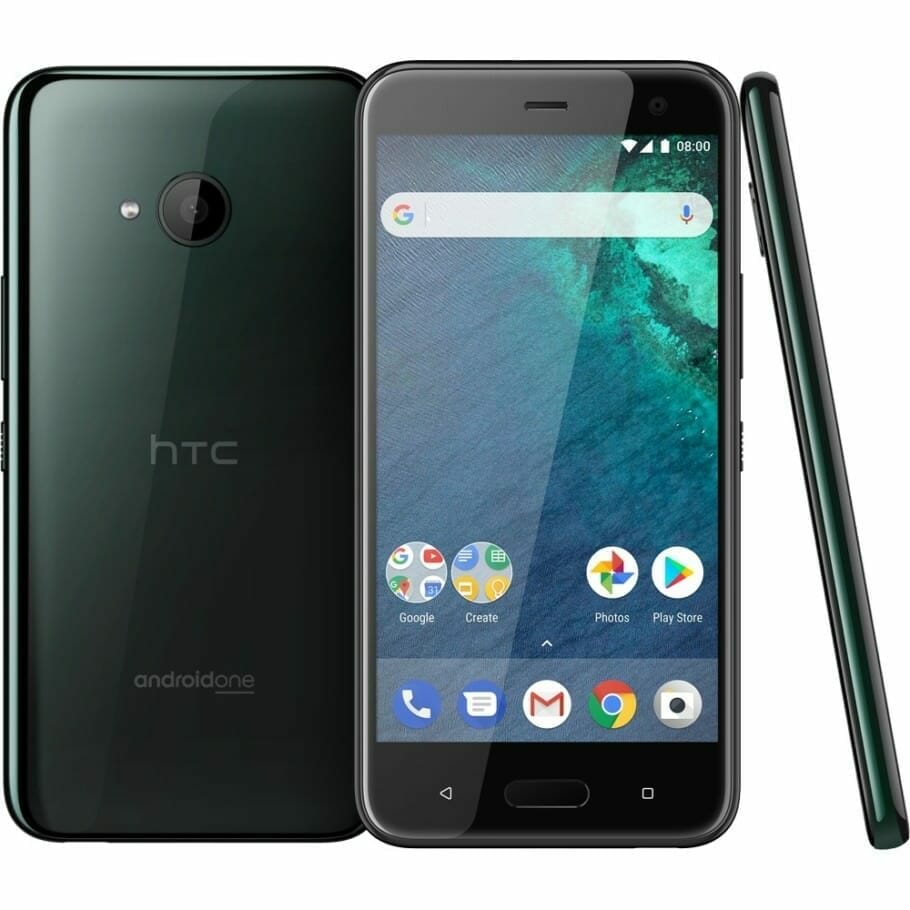Your shopping cart is currently empty!
For their successful, good life Information you really need: Government-funded publisher, awarded the Global Business Award as Publisher of the Year: Books, Magazine, eCourses, data-driven AI-Services. Print and online publications as well as the latest technology go hand in hand - with over 20 years of experience, partners like this Federal Ministry of Education, customers like Samsung, DELL, Telekom or universities. behind it Simone Janson, German Top 10 blogger, referenced in ARD, FAZ, ZEIT, WELT, Wikipedia.
Disclosure & Copyrights: Image material created as part of a free collaboration with Shutterstock. Text originally from: “Sprint: How to test new ideas and solve problems in just five days” (2016), More time: How to focus on what’s most important” (2018), published by Münchener Verlagsgruppe (MVG), reprinted with kind permission Authorization of the publisher.
Solve problems quickly and efficiently like Google & Co: Success in 5 steps
By Jake Knapp (More) • Last updated on October 28.05.2022, XNUMX • First published on 09.10.2020/XNUMX/XNUMX • So far 4141 readers, 1801 social media shares Likes & Reviews (5 / 5) • Read & write comments
Everyone wants their problems fast and solve efficiently. It has been proven that those who do not procrastinate work better. A method tried and tested in Silicon Valley helps.

- This is how efficient work works in Silicon Valley
- How robots make our work easier
- AI as a maid
- How to make structured decision-making processes more efficient
- This is how efficient problem solving works in 3 steps
- Identify recurring problems
- No result without risk
- Never forget the customer
- Address and eliminate deficiencies
- Answer crucial questions quickly
- Always check the direction you are going
- It all depends on the perfect team
- Top books on the subject
- Read text as PDF
- Advice on success, goal achievement or marketing
- Book eCourse on Demand
- Skate eBook as desired
This is how efficient work works in Silicon Valley
On a cloudy morning in May 2014, John Zeratsky walked into a beige building in Sunnyvale, California. John wanted to speak to someone at Savioke Labs, one of Google Venture's newest investments. He made his way through a maze of corridors, took a short flight of stairs to a simple wooden door that read "2B" and entered.
high-techCompanys act a bit disappointing to those expecting red-rimmed computer eyes, StarTrek-like holodecks, or top-secret designs. Most of Silicon Valley is essentially a bunch of desks, computers, and coffee mugs. But behind Door 2B were piles of circuit boards, plywood cutouts, and plastic fittings fresh from a 3D printer, along with soldering irons, drill bits, and blueprints. Yes, top secret designs indeed. "This place looks like what a startup should look like," thought John.
How robots make our work easier
The books on the subject (advertising)
And then he discovered the machine. It was a three-foot tall cylinder about the size and shape of a kitchen trash can. Its gleaming white body had an elegantly fitted, curved shape that widened at the top and bottom. At the top was a small computer screen that looked almost like a face. And the machine could move: it glided over the ground under its own power. "That's the relay robot," explained Steve Cousins, Saviokes Founders and CEO. Wearing jeans and a dark t-shirt, Steve was as enthusiastic as a middle school physics teacher. He looked proudly at his little machine. "It was built here, from prefab parts." The Relay robot, Steve explained, was designed for hotel guest services. He could navigate automatically, ride the elevator alone, and bring things like toothbrushes, towels, and snacks to hotel guests. Steve and John watched as the little robot carefully maneuvered around a desk chair and stopped near an electrical outlet.
Savioke (pronounced "Savvy Oak") had one Team made up of world-class engineers and designers, most of whom are former Employees from Willow Garage, a renowned private robotics research lab in Silicon Valley. They all had one thing in common: the vision Everyday life of people with the help of robots as hard-working helpers - in restaurants, hospitals, retirement homes and so on. Steve had decided to start with hotels because they provide a relatively simple and consistent environment with a constant Problem offered: Peak work hours in the mornings and evenings when the front desk was overwhelmed with check-in, check-out, and room service orders. That was the perfect place for a robot.
AI as a maid
The following month, the first fully operational Relay robot went live at a nearby hotel, providing real room service to real guests. If a guest forgot their toothbrush or razor, the robot came rushing over. But there was a problem. Steve and his team feared that the guests might not like the ministering robot. They might find it annoying or even have Anxiety in front of him. The robot was a marvel of Technology, but Savioke didn't agree for surehow the machine should behave towards humans.
The Risks"Having towels delivered by a machine was too impersonal," Steve explained. Savioke's chief designer, Adrian Canoso, made a lot of suggestions on how to make the robot's exterior friendly, but the team still had many decisions to make before the robot was truly public-ready. How should he communicate with the guests? How much Personality was too much of a good thing? "And then there was the elevator," Steve said. John nodded. "Personally, I get uncomfortable just having to ride in an elevator with other people." "Exactly," Steve agreed, slapping the relay. "And what happens when a robot is added?"
How to make structured decision-making processes more efficient
Discounts for your success (advertising)!
Savioke was only a few months in Shop. The company had focused on development and technology. They had negotiated a pilot project with Starwood, a hotel chain with several hundred properties. But there were still important ones Ask in space – questions critical to success, and there were only a few weeks left before the start of the pilot project. That was the perfect time for a sprint. Sprint is Google Venture's unique five-day process for solving critical issues by creating prototypes and then testing them on real customers let answer. Sprint is a kind of compilation of the "greatest hits" from business strategy, Innovation, behavioral science, design, and more—packaged into a step-by-step process that any team can use.
The Savioke team considered dozens of ideas for their robot and then used a structured decision-making process to select the most compelling solutions, without any group-think processes. A realistic prototype was created in a single day, and in the end, the team acquired target customers and set up a makeshift research laboratory in a nearby hotel. We'd like to tell you that we, the authors, were the genius heroes of this story. It would be wonderful if we could sneak into every possible company and share our brilliant ideas that will make it a resounding success. Unfortunately we are not geniuses. The sprint at Savioke worked because you worked there with real experts: those involved were already part of the team. We just gave them the right process for their job.
This is how efficient problem solving works in 3 steps
And here is the process of the Savioke Sprint. No robots are built at all in your company? never mind We use the exact same SprintStructure for software, services, Marketing and many other areas.
- First we put together a number of checklists, including a shopping list for necessary materials or a brief overview of the respective daily routine of the week. You don't have to memorize everything at once, but before we begin we need to carefully plan the process so that it will be a complete success.
- Then the team shoveled a full week off. From Monday to Friday they canceled all meetings, activated the "out of office" response function of their e-mail accounts and focused exclusively on one question: How should the robot behave in the presence of people?
- Next, they set a deadline. Savioke agreed with the hotel to conduct a live test on the Friday of sprint week. The countdown was on and the pressure increased significantly. We only had four days to design a working solution and create a prototype.
- On Monday, the Savioke team analyzed and reviewed everything they knew about the problem. Steve emphasized the importance of guest satisfaction, which is meticulously measured and tracked in hotels. If the relay robot increased satisfaction ratings during the pilot, the hotel would order more robots. If the value stagnated or fell and there was no order, the young start-up would find itself in a tricky position.
- Together we created a kind of overview plan, similar to a map, in order to identify the greatest risks. Imagine this plan like a storyboard in a film: guest meets robot, robot hands guest the toothbrush, guest is enthusiastic about the robot. There were critical moments on this storyboard when the robot and the guest meet for the first time: in the lobby, in the elevator, in the hotel corridor and so on. What point should we focus on? If you only have five days to sprint, you have to focus on well-defined goals. Steve chose the service fulfillment moment. If that works, the guest is delighted. If things go wrong, reception staff may have to spend all day answering questions from confused guests.
Identify recurring problems
One major concern kept popping up: the team feared the robot might appear too intelligent on the outside. "We're all spoiled by C-3PO and WALL-E," Steve explained. »We expect robots to have feelings and plans, hopes and dreams. But our robots are not that sophisticated. If a guest speaks to him, he will not answer. And if we disappoint the guests, we've failed.« On Tuesday, the team switched from problem definition to possible solutions. Instead of a blustering brainstorming session, each participant worked on their own Solution out of. And not just the designers. Tessa Lau, chief technology officer and chief engineer in robotics, was working on it, while Izumi Yaskawa, responsible for business development, and Steve, the startup's CEO, were also pondering possible solutions. By Wednesday morning, the walls of the conference room were plastered with sketches and notes. Some ideas were new, while others were old ideas that had been discarded or never thought through to the end. All in all we had 23 competing solutions.
How could we condense them into a few? In most organizations, the decision for weeks Meetings and require endless email traffic. But we only had one day available. The Friday test hung over our heads like the sword of Damocles and everyone felt the pressure. By means of a voting procedure and a structured discussion, we came to a calm, quick decision without Streit and arguments.
No result without risk
The test would feature a number of Savioke designer Adrian Canoso's most daring ideas: a face for the robot and a soundtrack of beeps and ringtones. The team also settled on one of the intriguing but controversial ideas in the solution outlines: if the robot satisfied was, he would perform a little dance of joy. "I'm still afraid we're giving him too much personality," Steve said. "But we have to take the risk." "If it explodes, we can always reverse it," Tessa said. Seeing the look on our faces, she reassured, "It was just that Fun. Don't worry, the robot can't explode."
As Thursday broke, we had just eight hours to prepare the prototype for live testing on Friday draw up. That was actually too short. With two Tricks we managed to finish our prototype on time: a lot of the hard work was already done. By Wednesday we had agreed on the ideas we wanted to test and documented each potential solution in detail. Only execution remained. The robot didn't have to function autonomously like it would end up doing in the hotel. He only had one job to do: deliver a toothbrush to a guest's room. Tessa and fellow engineer Allison Tse programmed and tuned the robot's movements using an old laptop and a PlayStation controller. Adrian put on large padded headphones and orchestrated the sound effects. The "face" was designed on an iPad and mounted on the robot. At five o'clock in the afternoon he was finished.
Never forget the customer
For Friday's test, Savioke arranged for guest interviews at the on-site Starwood hotel in Cupertino, California. At seven in the morning, we set up a makeshift research lab in one of the hotel rooms, using electrical tape to tape webcams to the wall. And at 9.14 a.m. the first one began female guest his interview. The Boy Frau studied the decoration of the hotel room: light wood, neutral tones, a latest generation TV. Modern and pleasant, but not unusual. So what was the purpose of the interview? Beside her was Michael Margolis, research partner at Google Ventures. For now, Michael wanted to keep the reason for the test secret as a surprise. He had pre-planned the entire interview to get answers to specific questions from the Savioke team. At the moment he was trying to find out about his interviewee's travel habits and to encourage her to do so when the robot appeared Honestly to react. Michael adjusted his glasses and asked a series of questions about their hotel habits. Where did she put her suitcase? When did she open it? And what would she do if she forgot her toothbrush?
"I don't know, I would probably call the front desk." Michael scribbled notes on a clipboard. "Okay." He pointed to the phone on the desk. "Please call reception." No sooner said than done. "No problem," replied the receptionist. "I'll have one brought to you at once." When the young woman hung up the phone, Michael continued his questions. Did she always travel with the same suitcase? When was the last time she left something at home? Drrrring. The phone cut her off. She picked up the receiver and received an automated message: "Your toothbrush is here." Without thinking further, the woman walked to the door and opened it. At the Savioke corporate headquarters, the sprint team had gathered around the video screens in excitement, watching their reaction tense. "Oh my god," she said. "That's a robot!" Slowly its shiny outer shell opened and a toothbrush appeared inside. The robot made a couple of ringtones and beeps as the young woman confirmed the room service on the touchscreen. When she rated this experience with five stars, the little machine performed a short dance of joy by swinging back and forth. "That's really cool," said the woman. "If the hotel uses this robot, I always come here."
It wasn't her words that really mattered; it was the enthusiastic smile that we could see via video stream. And it was in what she didn't do—no awkward pauses and zero frustration while handling the robot. When we watched the first interview in live video, we were very nervous. During the second and third interviews we laughed and even cheered. All guests reacted in the same way. They were thrilled when they saw the robot and no one had any trouble collecting their toothbrush, acknowledging receipt on screen and sending the robot on its way. Several guests asked for a second toothbrush to be brought in just to use it again SALE to experience. They even took selfies with him. But nobody tried him in one Conversation to entangle.
Address and eliminate deficiencies
At the end of the day, our whiteboard was littered with green ticks. The risky robot personality - the blinking ones Eyes, the sound effects and, yes, even the "Happy Dance" - were a hit. Before the sprint, Savioke was concerned they might be over-promising on the robot's capabilities. Now they realized that equipping the little machine with limited "human" features might be the secret to the increase of customer satisfaction. Of course, not all details were perfect. The screen was slow to respond. A couple of the sound effects weren't timing right yet, and one Idea, namely to integrate computer games into the touchscreen, did not go down well with the guests.
These shortcomings meant we had to re-prioritize some of the engineering work, but there was still time. Three weeks later, the robot started his full-time job at the hotel. The relay turned out to be a real hit. Stories about the charming robot have appeared in the New York Times and the Washington Post. In the first month alone, Savioke received more than a billion press mentions. Most importantly, the robot got to the guests. By the end of the summer, Savioke had placed so many orders that the company could barely keep up with production. Savioke had taken a risk by giving the robot its own personality. But the team was confident because the sprint gave them the opportunity to quickly test the risky idea.
Answer crucial questions quickly
As a partner of GV, our mission is to help our startups answer these critical questions. we are not Adviserwho are paid hourly. We are investors who are successful when the companies we support successfully are. To help them find a quick solution to their problems and get on their feet quickly, we've streamlined our sprint process to produce the best results in the shortest amount of time. Best of all, however, the process is based on people Background and tools that each team already has.
Through sprint work with our startups, we cut endless debates and compress months into a single week. Instead of launching a minimal product first to understand if an idea really works, our companies get it upfront klare Data from a realistic prototype. The sprint gives our start-ups a kind of superpower: they can get into the Future "Fast forward" and anticipate how customers will react to your finished product before making expensive investments. When a risky idea proves itself in a sprint, the result is overwhelming. The greatest return on investment, however, comes from failure, even if it hurts. Identifying deficiencies that are critical to success after just five days of work is the maximum in efficiency. This is a tough learning process, but it prevents expensive failure on the market at an early stage.
Always check the direction you are going
At GV we have sprints with companies like Foundation Medicine (Developer of highly specialized methods for cancer diagnostics), Nest (manufacturer of intelligent household electrical appliances) and Blue Bottle Coffee (as the name suggests, coffee producers). We have used sprints to test the profitability of new lines of business, to create the first version of new apps, to improve mass products, to define marketing strategies and to create reports for medical tests. Investment bankers have their next one with the help of sprints Strategy certainly; the Google team used sprints to build the self-driving car, and high school students used the process to solve a challenging math problem.
This text is a do-it-yourself guide to help you run your own sprint and answer your most pressing questions for your business. On Monday you will analyze the problem and determine the most important point that you will focus on. On Tuesday you will sketch possible solutions on paper. On Wednesday you will make difficult decisions and turn your ideas into a testable hypothesis. On Thursday you will create a realistic prototype and on Friday you will test it on real people.
It all depends on the perfect team
We do not give advice from above, we deal with specific details. We'll help you put together the perfect sprint team from people you're already working with. You will learn highly demanding things (for example, how to get the most out of the different opinions of your team members and the vision of a leader), moderate things (for example, why your team should turn off phones and computers for three days), and very simple things ( why you should have lunch at one o'clock). In the end, you won't have a complete, detailed, ready-to-ship product, but you will move forward quickly and you will know exactly if the direction you are going is in the right direction.
You may discover some methods that you are already familiar with and others that are new to you. If you're familiar with lean development or design thinking, you'll find that the sprint is a handy way to apply these guidelines. If your team uses so-called agile processes, you will find that our Definition from »Sprint« is different but complementary. And if you've never heard of these methods - don't worry, you won't have any problems. This method is suitable for experts and beginners alike; it's made for anyone who is faced with a big opportunity or idea or problem and needs to somehow get started. Each step has been tested, modified, retested, and evaluated over the course of our XNUMX+ sprints, and fine-tuned based on the feedback we've received from our growing sprint community. If the sprint doesn't work, it's not because of this text.
Top books on the subject
Read text as PDF
Acquire this text as a PDF (only for own use without passing it on according to Terms and conditions): Please send us one after purchase eMail with the desired title supportberufebilder.de, we will then send the PDF to you immediately. You can also purchase text series.
4,99€Buy
Advice on success, goal achievement or marketing
Do you have questions about careers, Recruiting, personal development or increasing reach? Our AI consultant will help you for 5 euros a month – free for book buyers. We offer special ones for other topics IT services
5,00€ / per month Book
Book eCourse on Demand
Up to 30 lessons with 4 learning tasks each + final lesson as a PDF download. Please send us one after purchase eMail with the desired title supportberufebilder.de. Alternatively, we would be happy to put your course together for you or offer you a personal, regular one eMail-Course - all further information!
29,99€Buy
Skate eBook as desired
If our store does not offer you your desired topic: We will be happy to put together a book according to your wishes and deliver it in a format of yours Choice. Please sign us after purchase supportberufebilder.de
79,99€Buy
Here writes for you
Jake Knapp designed the sprint process for Google Ventures. At Google, he managed sprint processes for Gmail to Google X. He is currently one of the most important developers in the world. All lyrics by Jake Knapp.


















Post a Comment